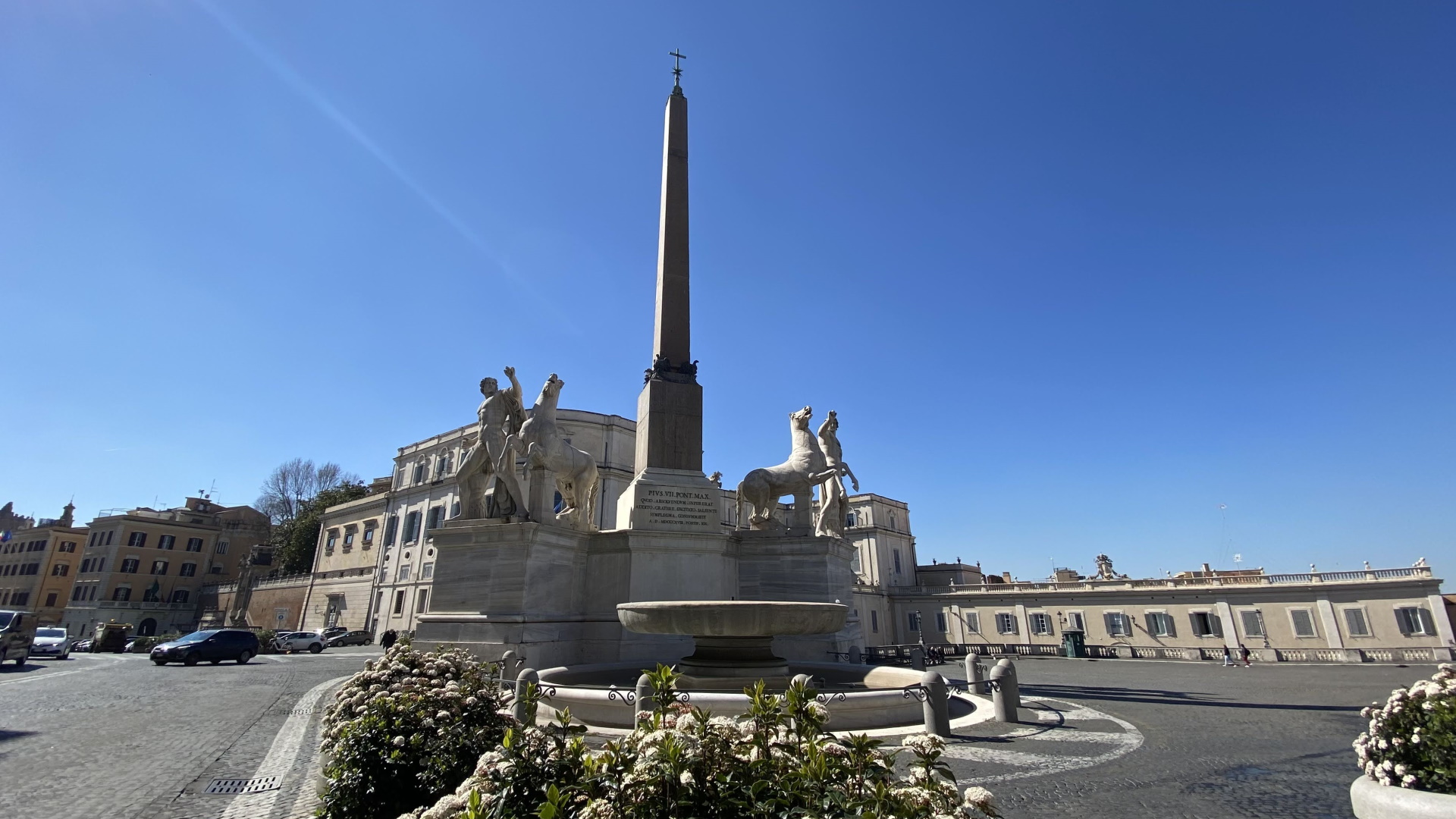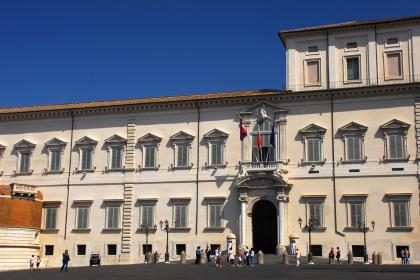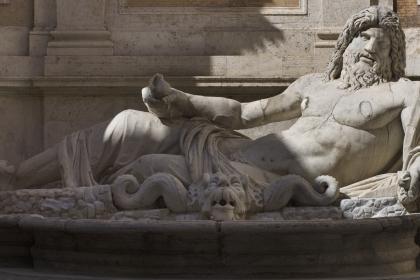
“[…] I hastened with Tischbein to the Monte Cavallo. The piazza before the palace has something altogether singular, so irregular is it, and yet so grand and so beautiful!
I now cast eyes upon the Colossuses! Neither eye nor mind was large enough to take them in." 3 November 1786, J.W. Goethe
The fountain is the decoration of one of the most representative squares of the city, also called "dei Dioscuri", Zeus and Leda's sons, the two twins of Greek and Roman mythology, Castor and Pollux. They are depicted holding their horses, according to a rare iconographic scheme, which appeared from the Severian age, i.e. from the 3rd century AD. The two colossal statues, over 5 meters high, probably come from the ancient Temple of Serapis, built by Caracalla. Later, they were reused to adorn the Baths of Constantine that occupied the slopes of the Quirinal. Thanks to their grandeur, they survived the fate of many other Roman works of art: burial, destruction or displacement. The statues represented the most prominent element of the hill, which, due to their presence, soon began to be called Monte Cavallo in medieval Rome.
Between 1469 and 1470, Pope Paul II commissioned the first partial restoration of the two sculptural groups, initially facing the building, now occupied by the Palazzo della Consulta and arranged parallel. In the following century, Sixtus V carried out a complete restoration of the sculptures, included in the expansion and embellishment of the square. The Dioscuri were moved to the sides of a marble basin decorated with the pope's coats of arms to form a scenographic backdrop for the Strada Pia, the current via XX Settembre, ending with the Porta Pia built by Michelangelo. The project was entrusted to Domenico Fontana, who moved the Dioscuri back by turning them towards the Quirinale Palace and aligning them a short distance from each other.
In 1782, however, Pope Pius VI commissioned the architect Carlo Antinori to completely rearrange the square. The Dioscuri were rotated and separated into two blocks on the sides of the obelisk from the Mausoleum of Augustus. The fountain of Sisto V was dismantled to be replaced with a granite basin from the Roman Forum. Antinori's intervention turned out to be more demanding than expected, and the architect was the object of witty mockery. One of the talking statues, Pasquino, commented that the obelisk could not be erected by an architect whose anagrammatic surname was "Non tirai" (I didn't pull - Ed.)
The works were interrupted by the Napoleonic events and resumed in 1816 when Pius VII commissioned Raffaele Stern to complete them. Stern was the well-known architect who created the New Arm of the Chiaramonti Museum in the Vatican and the restoration of the Colosseum. The large basin of the Roman Forum, unearthed and restored by Carlo Fea, was finally installed in 1818, supported by its ancient pedestal in the centre of a low basin in white marble. There are no traces of the previous fountain of Sixtus V built by Domenico Fontana; probably, it was destroyed during the interventions of Antinori.
The Quirinale Palace and square

 Condividi
Condividi
The Talking Statues

Information
 Condividi
Condividi
Location
To find out about all accessibility services, visit the Rome accessible section.











































